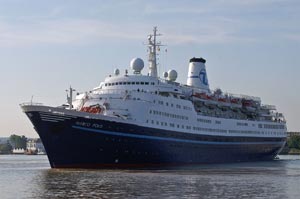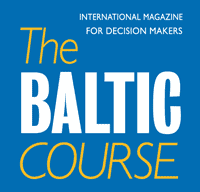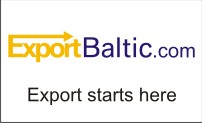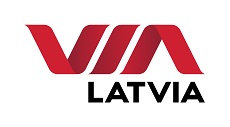EU – Baltic States, Legislation, Transport
International Internet Magazine. Baltic States news & analytics
Tuesday, 01.07.2025, 10:19
Sustainable transport in the EU: new facilities, resources and projects
 Print version
Print version |
|---|
The projects supported by the first Marco Polo programme from 2003 until 2006 have already resulted in taking 31 bln tonne-km from European roads, the equivalent of nearly 1,5 mln trucks traveling from Paris to Berlin. Although this was already a substantial help to reduce congestion on the European roads, the second Marco Polo programme for 2007-13 has seen its budget increase fourfold to € 450 mln for this period. With these financial resources, the current objective of the programme is to deal with the expected substantial increase in international road transport, estimated at 20 bln tonne-km per year.
Europe’s road system has experienced the increasing freight traffic mainly because of the failure of alternative modes – rail and shipping – to keep pace with rising demand and to contribute to an integrated transport solution.
Commission’s opinion
“The Marco Polo programme plays a vital role in getting Europe moving. We want to build on that success by making it easier for companies to participate in this process. The new rules adopted in Brussels on 9 October 2009, can help companies change towards sustainable transport services”.
Commission’s vice-President, Antonio Tajani, responsible for transport
New priorities
The second Marco Polo programme is the EU initiative running from 2007 to 2013. It aims to shift or avoid a substantial part of the expected increase in international freight traffic, estimated at 20 billion tonne-km per year, from Europe’s roads onto short-sea shipping, rail and inland waterway transport.
The amendments include a general reduction of the minimum thresholds for eligible projects, with a special reduced threshold for projects aiming to shift road freight to inland waterways. These changes will facilitate access to projects presented by smaller companies in general and inland waterways operators in particular. This trend is expected to produce a significant “transport shift” in the Baltic States.
In addition, it will be easier for these companies to apply for funding since the existence of a consortium for the application is no longer required.
The period going from the day of application to the signature of the grant agreements has also been shortened, giving beneficiaries quicker feedback from the Commission.
Finally, apart from other simplification measures, flexibility is added to the deadlines for completion of projects objectives and modal shift is extended to empty containers and transport vehicles if effectively taken out of the roads. The conditions for participation have been improved to further increase its appeal to the industry; will apply to the next call for proposals from the beginning of next year.
Priorities
a) Shifting freight off roads
Europe urgently needs a sustainable transport system that shifts freight off the roads onto more environmentally friendly transport modes.
Lorries are often the best means of transporting freight in delivering consumers’ supply. However, they are also costly – both in economic and environmental terms – over long distances. Within the context of the Commission’s 2001 White Paper on transport and its 2006 mid-term review, the second Marco Polo programme seeks to reduce road congestion by shifting or avoiding the yearly increases in international freight traffic from roads onto short-sea shipping, rail and inland waterway transport.
b) Reducing congestion
Europe’s road network suffers from ever-increasing congestion, increasing the time lost by road users and worsening environmental pollution. Long-distance freight, particularly international freight traffic, is a major contributor to this congestion.
Launched in December 2006, with a budget of €450 mln for the period 2007/2013, Marco Polo will contribute to an efficient and sustainable transport system by backing commercial undertakings, which set up intermodal, i.e. rail, sea and road-freight transport services.
Support will enable firms to offer more environmentally sustainable services in international freight transport markets. The emphasis is on services, as Marco Polo will not support research projects or the development of core infrastructure.
Main types of actions and new projects
Marco Polo support may be given for the following type of actions:
1. Modal shift actions
The aim is to provide aid to start up services. Projects should be robust, but not necessarily innovative: aiming simply to shift freight off the road. Maximum subsidy is about €2 per 500 tonne-km shifted off the road. Minimum threshold is 60-mln tonne-km shifted every year over the total length of each contract. Subsidy rate is up to 35% of eligible costs; ancillary infrastructure costs up to 20% of total eligible costs. Subsidy is available for up to three years. Support must not distort competition unduly. Besides, project must be viable after subsidy ends.
2. Catalyst actions
The aim is to overcome structural barriers in the market. Projects should be highly innovative and aim to achieve a real breakthrough. Maximum subsidy is about €2 per 500 tonne-km shifted off the road. Minimum threshold is 30 mln tonne-km shifted every year over the total length of each contract. Subsidy rate is to 35% of eligible costs. Ancillary infrastructure costs are up to 20 per cent of total eligible costs. Subsidies are available for up to five years, with a minimum of three years. Project developers must publish results with a mid-term review of each project. European Commission provides political support if required by a project. Financial support must not unduly distort competition. Project must be viable after the subsidy is terminated.
3. Common learning actions
The aim is to improve cooperation and the sharing of expertise. Objective lies in mutual training to help cope with an increasingly complex transport and logistics market. Minimum subsidy threshold is €250,000. Subsidy rate is up to 50% of eligible costs.
Subsidy is available for up to two years, with an extension possibility of two additional years. Project developers must publish results.
4. Motorways of the Sea
The aim of the projects is to shift freight from the road to short sea shipping or a combination of short sea shipping with other transport modes. Maximum subsidy is about €2 per 500 tonne-km shifted off the road. Minimum project’s threshold is 200 mln tonne-km shifted every year over the total length of each contract. Subsidy rate is up to 35% of eligible costs; ancillary infrastructure costs can be up to 20 % of total eligible costs. Subsidy is available for up to five years, with a minimum of three years. EU support must not distort competition. Project must be viable after subsidy ends.
5. Traffic avoidance actions
The projects’ aim is to integrate transport into production logistics avoiding a large percentage of freight transport by road. Maximum subsidy is about €2 per 500 tonne-km shifted off road. Minimum threshold is about 60-mln tonne-km avoided every year over the total length of each contract. Subsidy rate is up to 35 % of eligible costs. Ancillary infrastructure costs are up to 20 % of total eligible costs. Subsidy is available for up to five years, with a minimum of three years. EU support must not distort competition and project must be viable after subsidy ends.
Projects’ participants
Marco Polo support is open only to commercial undertakings (firms and companies). Participants may come from any EU Member State, or from “close third countries”, e.g. from EEA and EFTA members, candidate countries for EU accession, and Mediterranean partner states.
Funding from the EU budget is available to participants from EU Member States.
In addition, participants from candidate countries and from EEA and EFTA members may also receive EU funding where specific agreements are in place.
Projects must demonstrate a European dimension to be eligible for support. They should cover an international route, involving EU territory and that of ‘close third countries’.
Key requirements for applicants
- Proposals can only be submitted in response to an annual call announced in the EU’s Official Journal. The Marco Polo website gives indicative dates for forthcoming calls and full information.
- Subsidy calculations must be always based on the route the truck would have taken, if the freight had not been shifted to an alternative mode of transport (ship, rail or a combination of ship and rail).
- Participation and funding: while commercial undertakings from both EU Member States and “close third countries” are eligible to participate, only costs arising on the territory of EU Member States or countries, which have concluded specific agreements with the EU, are eligible for Marco Polo funding. Therefore, in calculating the subsidy for each project, only the parts of the route in countries eligible for funding can be used. This also applies in calculating the environmental benefit of the modal shift. Each call will specify the eligible countries.
- Projects eligible for support: the Marco Polo programme may support only projects concerning freight transport services. Infrastructure projects, RTD and study projects are not eligible for support.
- Participation by public authorities: only commercial undertakings are eligible to participate, but administrations may be up to 100% owners of participating commercial undertakings.
Legal base of the Marco Polo subsidy
The legal base of the Marco Polo programme (as is presently amended), is Regulation (EC) No 1692/2006, of 24 October 2006, which is published in the Official Journal of the European Union (OJ L 328, 24.11.2006, p.1).








 «The Baltic Course» Is Sold and Stays in Business!
«The Baltic Course» Is Sold and Stays in Business!

